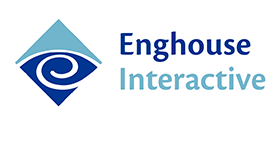Barbara Stuart at Enghouse explores five key strategies e-commerce contact centres can use to improve customer satisfaction, streamline operations, and build long-term customer loyalty.
“Where’s my order?” “How do I return this item?” “Can I get faster shipping?” Each of these questions is more than a simple inquiry-they’re make-or-break moments for your brand’s reputation.
Every interaction is a chance to win loyalty or lose it for good. In fact, 94% of consumers say they’re more likely to buy again after a positive service experience.
So, how can e-commerce brands consistently create experiences that boost Customer Satisfaction Scores (CSAT) and keep customers coming back?
Today, technologies like Voice of the Customer (VoC) enable brands to capture real-time insights into customer needs.
Combined with automation, which is set to expand across 40+ customer experience applications over the next two years, these tools empower brands to respond faster and with greater precision than ever.
From streamlined response times to sharper insights, modern contact centre software equips your e-commerce team to turn every question into a moment of loyalty-building. Here’s how it works.
How Modern Contact Centres Drive Higher CSAT in E-Commerce
Did you know that AI-powered virtual agents can be scheduled and evaluated just like human agents, but they’re available 24/7?
For eCommerce contact centres, this means round-the-clock support and faster responses, which are key drivers of improved CSAT scores. Let’s explore how virtual agents and other innovative strategies can elevate customer satisfaction.
- Customers to Resolve Inquiries Instantly, Without Live Agents
- Enhancing Customer Engagement with the Right Channel, Language, and Visual Support
- Increasing Agent Productivity with a Knowledge Management Service
- Understanding Customers Deeply Using Voice of Customer (VoC) Analysis
- Boosting Agent Performance and Engagement through Automated Agent Evaluation
With these strategies, e-commerce contact centres can streamline operations, improve customer experiences, and build lasting loyalty. Let’s explore each of them.
1. Empowering Customers to Resolve Inquiries Instantly, Without Live Agents
A common pain point in eCommerce contact centres is the high volume of routine inquiries like “How can I expedite the shipping of this product?” or “How do I return this item?” These repetitive queries overload support lines, leading to long wait times and frustrated customers.
Virtual agents, significantly more capable than chatbots, can alleviate this by instantly resolving these low-complexity questions without customers needing to wait for a live agent.
From helping to expedite deliveries to providing return instructions, virtual agents deliver quick, accurate answers across channels, enhancing the customer experience and freeing agents to focus on more complex issues.
Virtual agents can converse with customers in natural language. They pull information from your website and other trusted knowledge sources, giving customers instant and accurate answers.
Available 24/7 across voice, chat, and SMS, these AI-powered agents ensure customers get the help they need, whenever they need it. Moreover, virtual agents can be scheduled and evaluated like human agents as previously mentioned.
2. Enhancing Customer Engagement with the Right Channel, Language, and Visual Support
Customers today expect fast, accurate answers across channels like voice, SMS, chat, email, social media, and video. Yet when interactions are disjointed, agents end up repeating information, managing fragmented conversations, and delivering inconsistent responses.
This lack of cohesion frustrates customers, reduces satisfaction, and erodes brand loyalty, creating critical service gaps.
An Omnichannel Communication contact center unifies all customer touchpoints on a single platform, giving agents immediate access to each customer’s interaction history. This integration enables faster, consistent responses and improves First Contact Resolution (FCR).
For multilingual support, AI-enabled chat translation instantly detects and translates messages into the customer’s language.
This allows agents to respond naturally in their own language, with the AI automatically translating replies back to the customer, enabling smooth, real-time bilingual conversations.
3. Increasing Agent Productivity with a Knowledge Management Service
E-commerce contact centres often rely on fragmented information sources – such as emails, disparate documents, and other disconnected sources – that struggle to keep pace with frequent updates to product details, return policies, and other critical information.
This results in inconsistent information for agents, leading to longer handling times, repeat inquiries, and customer frustration due to delays or inaccuracies. Over time, this can undermine customer trust.
A Knowledge Management Service (KMS) addresses these issues by centralizing and organizing information, making accurate content readily accessible across all channels.
By delivering the right information at the right time, the KMS enhances self-service, accelerates issue resolution, and lowers support costs.
With potential annual savings of $1-3 million and a payback period of 6-8 months, a KMS is a valuable investment for efficient operations and improved customer satisfaction.
4. Understanding Customers Deeply Using Voice of Customer (VoC) Analysis
Every interaction matters. And in e-commerce contact centres, those interactions turn into powerful data about what customers think and feel.
However, without efficient analysis, critical patterns and nuggets can go unnoticed, leading to unresolved issues, lost sales opportunities, undetected product or operations gaps, and – ultimately – customer churn. For organizations, this impacts service quality, brand loyalty, and long-term growth.
A Voice of Customer (VoC) solution addresses these challenges by analyzing interactions across all channels – voice calls, emails, chats, and social media – and transforming them into clear, actionable insights.
Using sentiment analysis, VoC detects emotions like satisfaction, frustration, and even sarcasm, provides a complete view of customer expectations, and allows eCommerce companies to refine strategies based on real customer sentiment.
These insights also reveal patterns in logistical, operational, and product-related issues, enabling teams to address critical challenges before they escalate.
This proactive approach strengthens customer loyalty, reduces churn, and creates more opportunities for upselling and cross-selling.
5. Boosting Agent Performance and Engagement through Automated Agent Evaluation
E-commerce contact centres regularly handle complex inquiries, from order modifications and refund disputes through to non-policy returns and multi-currency payment issues.
When agents aren’t equipped to handle these specialized needs, the result can be miscommunication, unresolved issues, extended call durations and repeat calls – all of which frustrate customers and create stress for agents, impacting satisfaction scores and brand loyalty.
Traditionally, call centre managers have assessed agent performance manually, reviewing fewer than 5% of interactions due to the sheer volume of interactions and evaluation time.
This limited approach gives an incomplete picture of an agent’s performance, leading to missed targeted coaching opportunities. Moreover, small sample sizes compromise fairness and accuracy, leading to bias and inconsistency.
By implementing contact center software solutions with these five capabilities, e-commerce businesses can streamline and elevate customer support.
Among the many options available, contact centre solutions by Enghouse Interactive stand out for the trust they have earned by helping organizations worldwide boost their CSAT scores for the last 40 years.
This blog post has been re-published by kind permission of Enghouse Interactive – View the Original Article
For more information about Enghouse Interactive - visit the Enghouse Interactive Website
Call Centre Helper is not responsible for the content of these guest blog posts. The opinions expressed in this article are those of the author, and do not necessarily reflect those of Call Centre Helper.
Author: Enghouse Interactive
Reviewed by: Rachael Trickey
Published On: 19th Jun 2025
Read more about - Guest Blogs, Enghouse Interactive






 Enghouse Interactive delivers technology and expertise to help bring your customers closer to your business through its wide range of customer contact solutions.
Enghouse Interactive delivers technology and expertise to help bring your customers closer to your business through its wide range of customer contact solutions. 






























